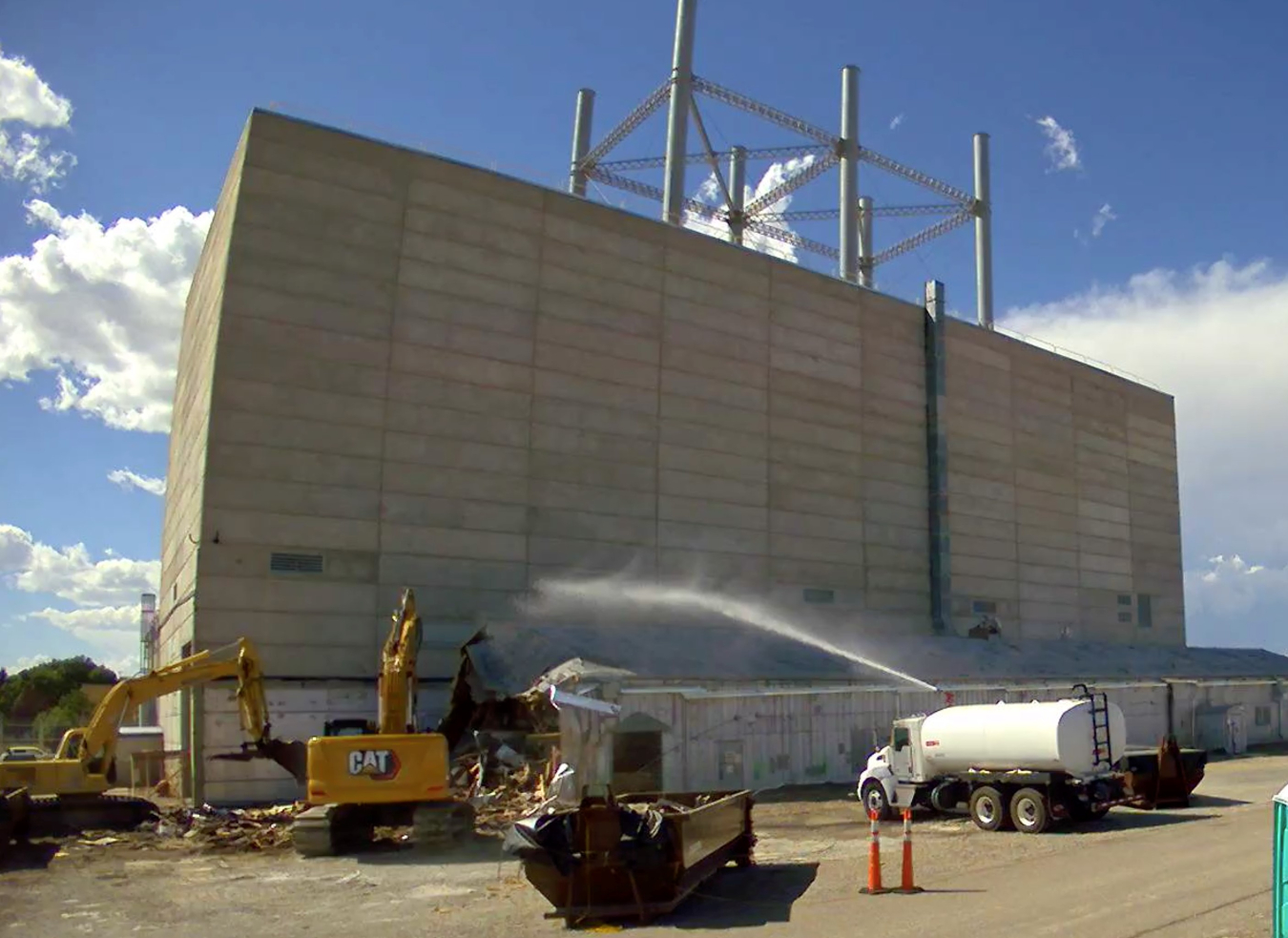EM is moving forward with plans to demolish two defueled naval reactor prototypes and associated buildings at the Idaho National Laboratory (INL) Site.
Office of Environmental Management
March 14, 2023
EM decontamination and decommissioning crews work to remove two buildings at the Naval Reactors Facility at the Idaho National Laboratory Site last year. Watch a video on the project here.
IDAHO FALLS, Idaho – EM is moving forward with plans to demolish two defueled naval reactor prototypes and associated buildings at the Idaho National Laboratory (INL) Site.
EM, the Office of Naval Reactors Idaho Branch Office, the U.S. Environmental Protection Agency and State of Idaho Department of Environmental Quality agreed to an end state for the reactors and structures early last month.
The agencies had considered four alternatives ranging from no action, continued monitoring, partial demolition, to full demolition of the Submarine 1st Generation Westinghouse (S1W) and Aircraft Carrier 1st Generation Westinghouse (A1W) defueled naval nuclear propulsion plants and associated buildings at the Naval Reactors Facility at the INL Site.
After considering public comments, the agencies opted to remove the prototype facilities, which involves the removal of the reactor vessels and associated equipment and demolition of associated buildings to three feet below grade, with a majority of the waste to be disposed of at authorized facilities on the INL Site.
“Our crews look forward to this project,” said Mike Swartz, director of decontamination and decommissioning at Idaho Environmental Coalition (IEC), EM’s cleanup contractor at the INL Site. “This will be the largest demolition effort onsite in over a decade.”
S1W was the first land-based nuclear submarine prototype, developed concurrently with construction of the first naval nuclear submarine at Electric Boat in Connecticut. S1W became an important training facility for U.S. Navy nuclear operators.
As the Navy’s need for nuclear-powered surface ships evolved, the A1W nuclear prototype was built at the Naval Reactors Facility to test new technology.
The S1W and A1W facilities were shut down in 1989 and 1994, respectively. Both S1W and A1W prototypes are historically significant, and Naval Reactors has been working with the State Historic Preservation Office to preserve the history in accordance with the National Historic Preservation Act.
Under the chosen alternative to remove the facilities, low-level radioactive debris — including the reactor vessels and associated equipment — will be shipped to an authorized disposal facility such as the onsite Idaho CERCLA Disposal Facility. That 390,000-cubic-meter disposal facility provides a centralized engineered facility for containment of onsite waste for long-term protection of human health and the environment. CERCLA stands for the Comprehensive Environmental Response, Compensation and Liability Act.
Non-contaminated, non-hazardous debris will also be disposed of onsite. Demolition materials will be recycled to the extent practicable.
“Decommissioning these prototype facilities will have its own unique challenges,” IEC Waste and Decontamination and Decommissioning Senior Director Dan Coyne said. “We understand and respect the significance these facilities played in our country’s past, and we look forward to the opportunity of safely dispositioning them.”
To receive the latest news and updates about the Office of Environmental Management, submit your e-mail address.

